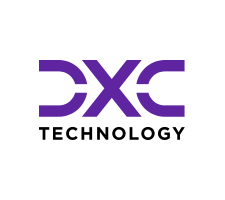The NHS must focus on collaboration to reap the benefits of digital solutions, writes Dr Pooven Maduramuthu, healthcare industry lead, UKI at DXC Technology.
The NHS is currently facing significant challenges, including resource constraints, fragmented systems, and increasing demands for high-quality patient care. Digital enabling solutions have the potential to address these issues by improving interoperability, streamlining processes, and enhancing patient outcomes. However, to fully realise these benefits, the NHS must prioritise collaboration. By working together, NHS organisations can leverage existing investments, reduce implementation costs, and benefit from economies of scale. This collaborative approach ensures that digital solutions are not only effective but also sustainable and scalable across the healthcare system.
Sponsored and written by
Additionally, the recent decision to abolish NHS England and the potential reduction in the number of integrated care systems pose significant organisational challenges. These changes risk increasing fragmentation and reducing local autonomy, making collaboration even more crucial. By fostering strong partnerships, NHS organisations can navigate these transitions more effectively, ensuring continuity of care and maximising the impact of digital innovations.
Collaboration across the NHS is essential for the success of digital solutions. Here are just five main benefits in the context of ever-increasing demand on the system:
Interoperability and data sharing: Collaboration ensures systems are interoperable, allowing patient data to flow securely and efficiently across different services. This is critical for delivering integrated care and reducing duplication of effort.
Standardisation and best practice: Working together enables the NHS to develop shared digital standards and frameworks, ensuring consistency in implementation and reducing the risk of fragmented or incompatible systems.
Cost efficiency and resource optimisation: By pooling resources, NHS organisations can reduce duplication of procurement and development costs, and benefit from economies of scale, especially important in the context of tight budgets.
Faster innovation and scaling: Collaborative pilots and shared learnings accelerate innovation and enable successful digital tools to be scaled more quickly and effectively across different regions and care settings.
Enhanced user adoption and patient experience: When digital tools are designed with input from across the NHS—including clinicians, IT teams, and patients—they are more likely to meet real-world needs, increasing uptake and delivering better patient outcomes.
The good news is that there are already many examples of collaboration in action across the NHS, but we need to do more:
- Somerset Foundation Trust – Cloud-based cancer pathway management
- North Bristol Trust – Centralised quality governance
- Kettering General Hospital – Cloud migration for enhanced agility
- Maidstone and Tunbridge Wells Trust – Real-time bed management
- Central and North-West London Foundation Trust – Electronic prescribing system
However, the initiative that most impresses me across the NHS is what the East Midlands Acute Providers are doing through the Digital Design Collaborative. Huge congratulations to the digital leaders across EMAP, who have set the benchmark. Some of their successes include:
1. Unified electronic patient record adoption across six trusts: The trusts have collectively adopted Nervecentre’s EPR. This unified approach enhances regional collaboration on best practices and resource allocation as well as supporting standardised training and digital skills development across the region.
2. East Midlands Radiology Consortium innovations: EMRAD, a collaboration among multiple trusts, has implemented several digital solutions to enhance radiology services: Patient Online Appointment Booking; Imaging Command Centre and iRefer Clinical Decision Support.
3. Region-wide dashboard for head and neck cancer pathway: The East Midlands Head and Neck Cancer Network, encompassing six NHS provider trusts, collaborated with NHS Arden & GEM to develop a comprehensive data dashboard. This tool provides a holistic view of pressures across the entire cancer pathway, enabling better understanding, communication, and operational performance. Standardised clinical coding and timely data capture support mutual aid and capacity planning, leading to improved patient outcomes.
4. Strategic workforce deployment: The DDC has adopted a regional recruitment strategy, hiring roles such as digital trainers, implementation specialists, and test analysts to serve across all member organisations. This approach allows for a more strategic allocation of resources, ensuring that expertise is deployed where it’s most needed and fostering a unified digital culture.
5. Collaborative procurement and resource sharing: By making joint procurement decisions, the DDC leverages economies of scale, reducing costs and ensuring that all member trusts benefit from high-quality digital solutions. Additionally, sharing resources and experiences across trusts enhances clinical safety and accelerates the realisation of EPR-enabled benefits.
DXC Technology recognises how collaborative efforts can lead to significant improvements in service delivery and patient care and have been instrumental in advancing digital collaboration within healthcare:
- Intermountain Healthcare partnered with DXC Technology to expedite the adoption of advanced IT solutions. This collaboration involved transitioning 98 IT employees to DXC, allowing Intermountain to leverage DXC’s expertise in technology management. The partnership aimed to enhance the efficiency of IT operations, enabling clinicians to focus more on patient care, as well as delivering significant cost reductions.
- Cabrini Health (Australia) collaborated with DXC to develop and implement a virtual electronic medical record system, providing healthcare professionals with real-time access to patient information via mobile devices, improving the speed and quality of clinical services. The initiative also included electronic medication management, enhancing patient safety through proactive alerts and streamlined workflows.
- NHS Digital partnered with DXC Technology and Australia’s CSIRO to develop a terminology server to improve data sharing across different health and care organisations, facilitating the mapping of administrative and clinical codes, supporting integrated care by providing consistent technology mapping capabilities.
- North Staffordshire Combined Healthcare Trust collaborated with DXC to deploy the Open Health Connect platform, creating a digital portal for young people to self-refer to local mental health services, significantly reduced referral times, alleviated pressure on healthcare professionals, and provided timely support to at-risk children.
- DXC Technology, in partnership with Cegeka, is developing a digital care and support platform for the Flemish government to simplify collaboration among care and welfare workers, enabling care teams to assemble, plan, and divide care tasks efficiently, focusing on patient-centric goals and facilitating effective communication between professionals and patients.
- Under a multi-vendor framework agreement with Italy’s national healthcare sector, DXC Technology is set to modernise healthcare by deploying advanced analytics and artificial intelligence to efficiently manage citizen and patient data, enhancing user experiences and delivering greater value for public services.
In a time when demand for NHS services is increasing exponentially and funding remains scarce, collaboration, whether between NHS trusts, technology partners, or internal departments, is essential for the successful implementation and scaling of digital solutions. By working together, the NHS will improve patient outcomes, operational efficiency, and staff satisfaction.





























